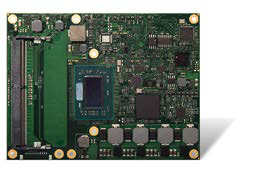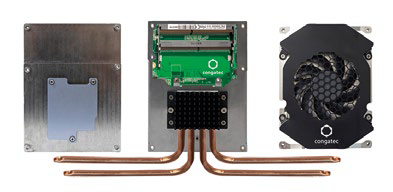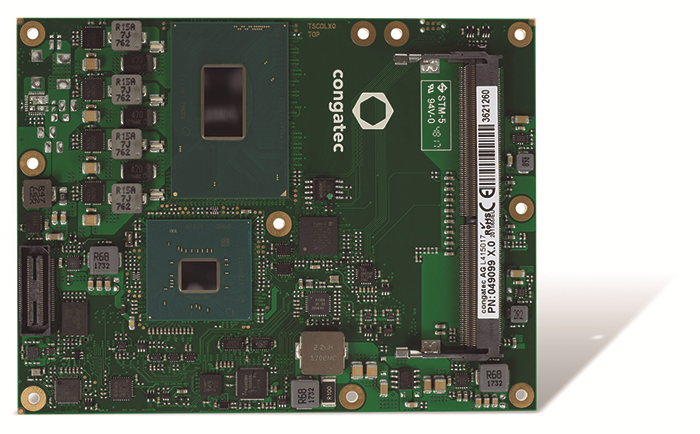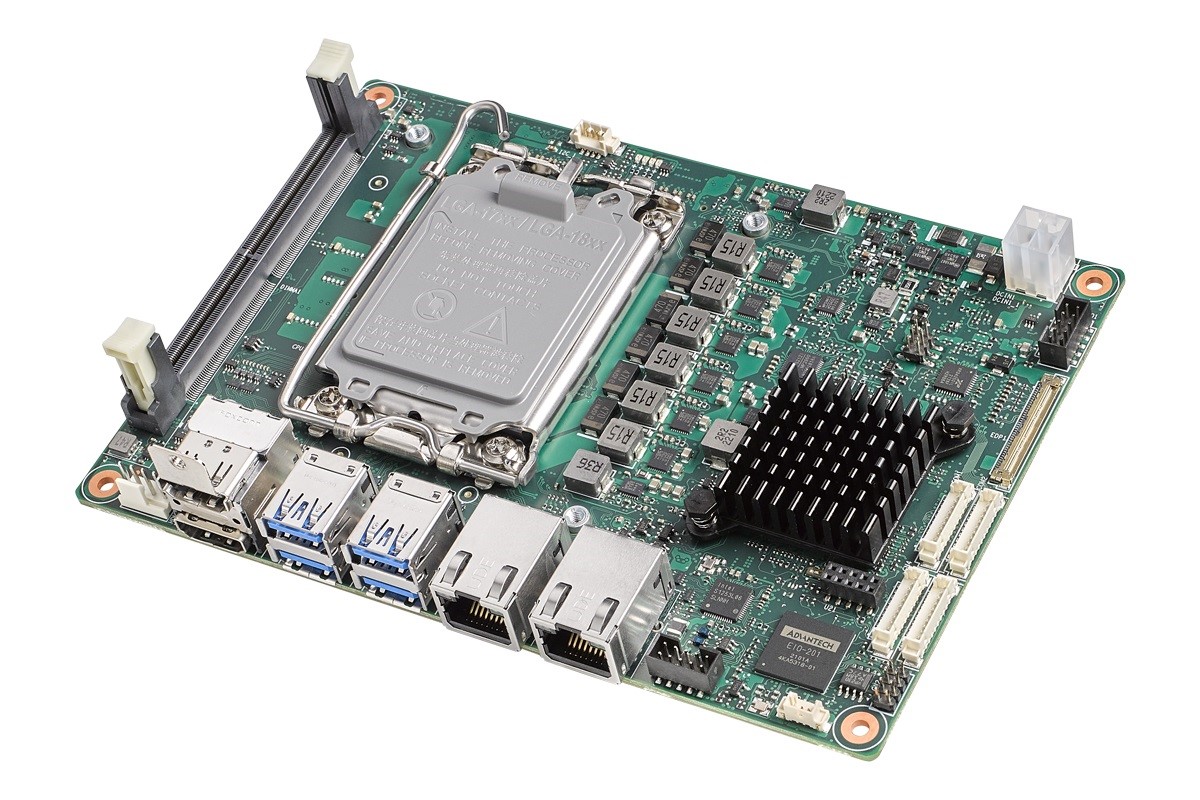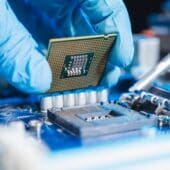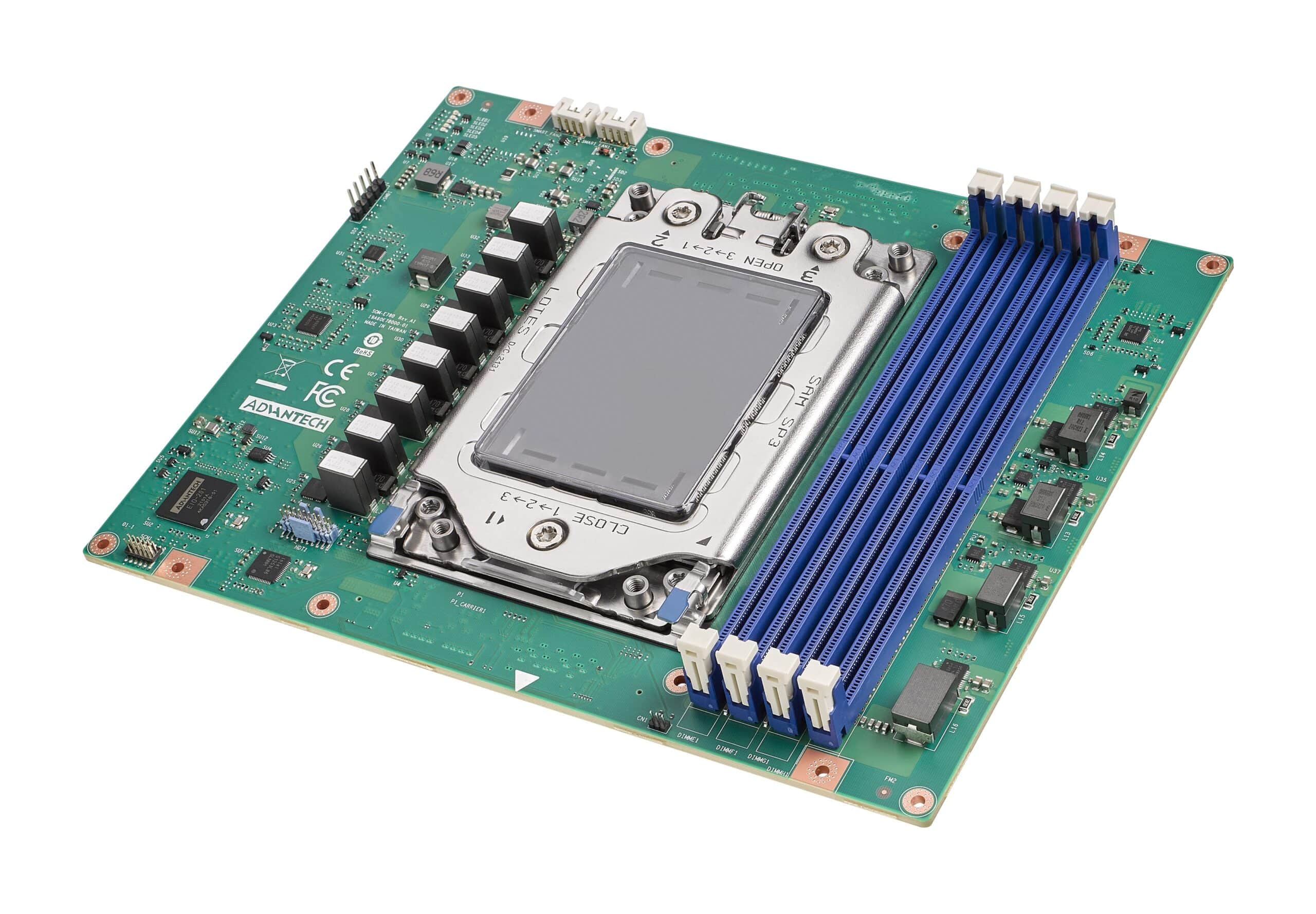When it comes to selecting the right processor, many developers face a big hurdle: the offer on the market is huge. AMD also offers a wide range of embedded processors. However, if you ask the right questions, finding the best processor for your needs isn't that hard.
Elektronik: Mr. Seyfried, could you summarize the differences between AMD Embedded Ryzen™ and EPYC™ processors?
Stefan Seyfried: The first thing to note is that both processor families are built on the same microarchitecture: the "Zen" architecture, in different generations. In 2017, we started with “Zen 1” in the consumer sector, followed by “Zen 2” and “Zen 3”. The core is largely the same whether we build embedded, mobile, desktop, client, or server processors.
If we compare the embedded EPYC and embedded Ryzen processors, the first big difference is the graphics. It is not integrated into EPYC processors, while Ryzen processors are Accelerated Processing Units (APUs), which means that the graphics are integrated into the die.
What are the markets using Ryzen APUs?
With few exceptions, embedded systems need graphical support. Which means that embedded Ryzen CPUs are found in HMIs, medical applications, as well as industrial PCs. There are also some unusual application areas. Ryzen V1000 processors, for example, are deployed in space, others are used to measure distances between planes. Another field of application for embedded Ryzen processors is the automotive sector. For example, the largest seller of battery electric cars equips its infotainment system with Ryzen Embedded CPUs and RDNA 2-based GPUs.
What are AMD EPYC Embedded processors best suited for?
Unlike Ryzen Embedded CPUs, EPYC processors are more common in the edge segment, where a lot of data needs to be processed and high CPU performance is critical. The EPYC series is ideal for this because it offers up to 128 PCIe® lanes. This is an advantage for 5G systems, for example, since they require very high bandwidth. For server-oriented applications, graphics is also less important than high computing speeds, with up to 64 cores in the EPYC range.
So is the embedded EPYC series the preferred choice for edge computing applications?
Edge computing covers a huge field and the question of which processor is the best depends largely on the area of application. Take a classic edge application, such as a 5G enterprise campus network, as an example. In this case, a Ryzen V2000 may suffice as it provides enough PCIe lanes while offering very low TDP and high CPU performance with up to 8 cores.
At the other end of the scale, we have the classic edge applications that connect a large number of IoT devices in a factory. They are designed for the sole purpose of processing data. In this case, an EPYC CPU with its many PCIe lanes may be more suitable. As you can see, the choice of processor is very application specific.
So the developer should choose the processor based on the individual use case?
Exactly. That is also the reason why COM module manufacturers like congatec or Kontron offer different modules with different processors. In this way, there is the right option for each developer and for each application.
Does this mean that COM module manufacturers should adopt different processors?
Yes, because you can't address all the opportunities with a single processor. If module manufacturers want to cover the entire market, they should use both Ryzen and EPYC processors. If they relied solely on Ryzen CPUs, the entire network segment and much of the edge segment would be lost. This would leave only the classic sector of industrial PCs and IoT gateways. Looking at the growth rates of edge storage and networking, it would be a shame to look down on this segment.
When does a developer choose an AMD CPU and why?
The first question developers should always ask themselves is: x86 or Arm? Ultimately, x86 relies on a broader ecosystem than Arm. By ecosystem I mean development tools, but also compilers or finished software. The second issue is finding people to program the software. Especially in universities, almost all students program on x86, which is a great advantage for us. So, in addition to the performance advantages, the rich ecosystem is another reason why the choice falls on x86 time and time again.
Arm, on the other hand, is more limited in terms of the ecosystem. Nonetheless, Arm is interesting for many applications, especially in the ultra-low power range. However, when it comes to offering the most flexible software solution possible, x86 is far superior.
Yes, but even within the x86 ecosystem, the choice is huge…
That's how it is. AMD has a huge selection of CPUs, from the Ryzen R2000/V2000 and EPYC 3000 to the EPYC 7001, 7002 and the new 7003 variants. Other processor manufacturers offer equally wide ranges. So developers have to ask themselves:
– What do I want to achieve with my application? What basic functions does my system need?
– What are my graphics and I/O requirements?
– What is the maximum TDP I need?
By answering these three questions, developers can reduce the choice from about 50 processors to about 10. This makes the decision easier. This makes the decision much easier.
Many edge applications require high parallel computing power, often supported by GPUs. To what extent does AMD meet these needs?
AMD first got into graphics through its acquisition of ATI. Very quickly thereafter, AMD began to integrate GPUs with CPUs into APUs. A CPU with a GPU and more integrated logic has much higher performance than the average user needed in the past. That's why we strive to develop open standards like OpenCL to speed up the use of these heterogeneous system architectures and change the way embedded systems are used. We were also the first to talk about ubiquitous computing, which has now become Industry 4.0, IIoT, and digitization.
Another example is Windows ML, the Windows IoT machine learning plugin. It makes it easy for developers to use graphics as computing power. These accelerators are an important part of AMD's strategy. There's also the AMD Instinct™ series of accelerator cards for data center applications. These have been very successful, especially in the last two years. We have won many new projects in the areas of HPC and cloud applications, for which we also supply a complete software stack called AMD ROCm™.
Nvidia has recently launched its first CPU on the market. Do you see Nvidia as a serious competitor in the CPU market?
In my area, I have yet to hear of customers switching to Nvidia. However, in general, we take all competitors seriously. And we're used to competing with the strongest in the industry, both when it comes to CPUs and GPUs. This will always be the case, which is why we don't stand still, but continually develop our products to gain competitive advantages time and time again. "Zen" architecture is an excellent example. The combination of exceptionally good CPUs and GPUs also makes us a particularly strong competitor. Therefore, we see ourselves in a strong position among the competition.
How do you meet the security requirements of embedded applications?
Again, the fact that Ryzen and EPYC are based on the same kernel works in our favor. It means that security issues are the same for both families. There are some features that are only included in EPYC CPUs, as they are not relevant to customers. An example is secure virtualization, which means that virtual instances cannot spy on each other, since each one runs in an encrypted memory zone. These features are not found in the Ryzen range.
However, architecture alone is not enough…
Let's face it: hackers will always be one step ahead. We can fix security weaknesses that are detectable today, that is our responsibility. However, we will always have to work on updates and new security features. With our processors, the entire memory area can be encrypted, for example. This is very important for industrial PCs, which often work with attached memories.
Additionally, we have implemented secure encrypted virtualization on our EPYC processors. Google has recently started using it in its Confidential Cloud instances. Anyone connecting to specific Google Cloud confidential VMs can decide if they want such a secure instance. We place a lot of emphasis on our security features because we recognize that it's a selling point.
Thank you very much for the interesting interview Mr. Seyfried.
Quote: "The choice of processor is highly dependent on the specific application."
Stefan Seyfried is AMD's director of sales for embedded systems. This electrical engineer has been at AMD for more than 25 years.



